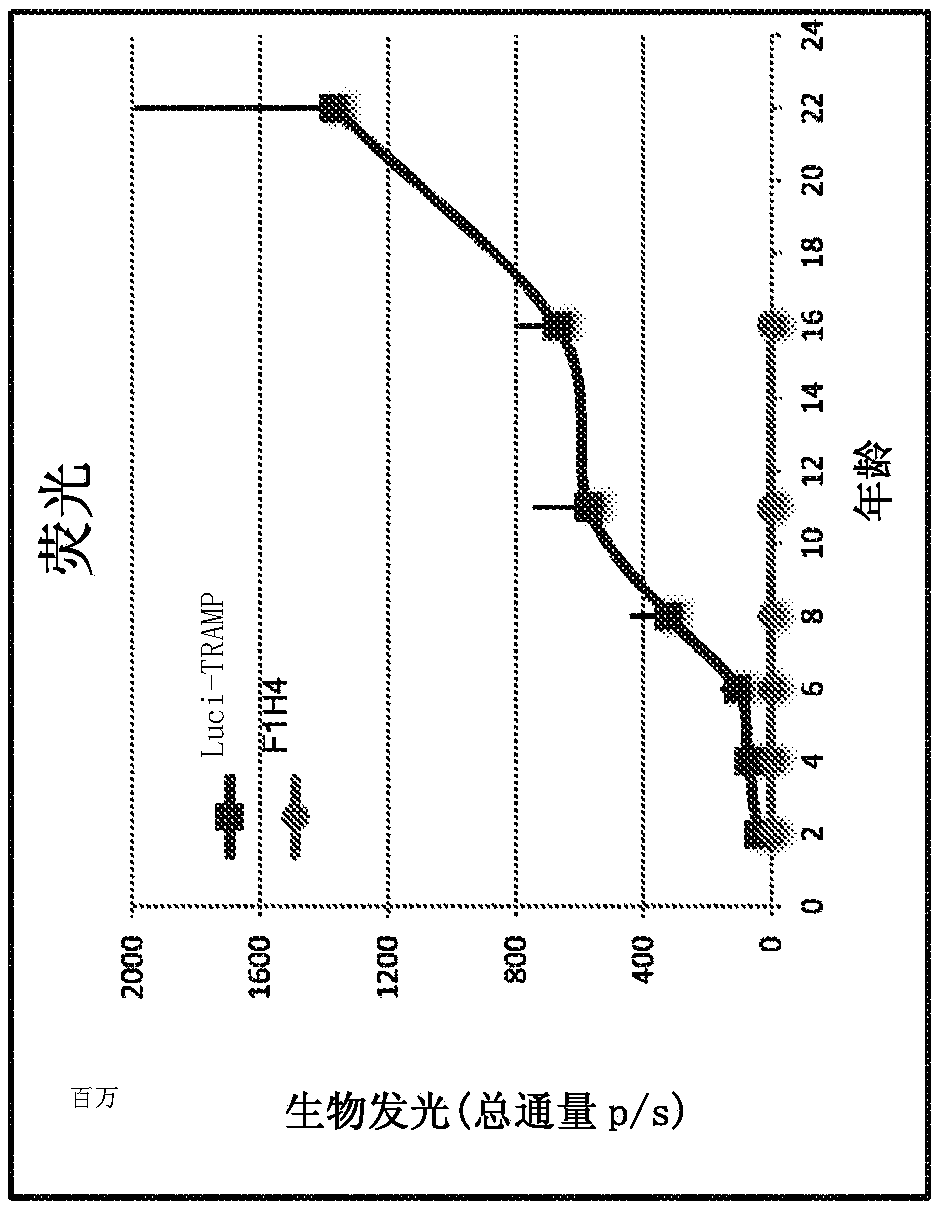Rodent model of prostate cancer
A technology for rodents and prostates, applied in animal cells, vertebrate cells, microorganisms, etc., can solve problems such as limiting correlations
- Summary
- Abstract
- Description
- Claims
- Application Information
AI Technical Summary
Problems solved by technology
Method used
Image
Examples
Embodiment 1
[0125] Example 1. Production of Luci-TRAMP mice
[0126] This example illustrates the generation of transgenic mice (also referred to herein as Luci-TRAMP mice) comprising a transgene comprising the nucleic acid coding sequence for the SV40 tumor antigen-T2A-luciferase polypeptide flanked by The 5' regulatory region and the 3' regulatory region of the mouse probasin gene.
[0127] through bacterial homologous recombination and technology to construct vectors containing transgenes (see for example U.S. 6,586,251 and Valenzuela et al., High-throughput engineering of the mousegenome coupled with high-resolution expression analysis, 2003, Nature Biotech. 21(6):652-659). Briefly, RP23-417B18 was cloned using a bacterial artificial chromosome (BAC) containing the mouse probasin gene and modified as follows. A fragment consisting of 75 base pairs (bp) of mouse 5'-UTR, SV40-T antigen (without stop codon), followed by T2A sequence, NcoI / XhoI / NheI restriction site and stop codon and ...
Embodiment 2
[0132] Example 2. Longitudinal analysis of the Luci-TRAMP cohort
[0133] Luci-TRAMP mice generated from ES clone A-C10(5x) were designated MAID 2319 and used in the experiments described in this example. A mouse named MAID 2363 containing the transgene "R26-L-luc2" at the Rosa 26 locus in the genome (which expresses a luciferase reporter in a non-tissue-specific manner) and wild-type mouse F1H4 were used as controls .
[0134] Cohorts of 35 MAID2319 mice (Luci-TRAMP) were bred to allow prostate tumor development, while an equal number of MAID 2363 mice (R26-L-Luc2) and F1H4 mice were bred. Five mice were removed from each group at 2, 4, 6, 8, 11 and 16 months for in vivo luciferase imaging, μCT scanning (to assess lean muscle / fat / bone mass), histopathology Physiological analysis (starting at 4 months) and molecular phenotyping (RNA-seq and qPCR).
[0135] For longitudinal studies, at each indicated time point (inset below), fluorescein (150 mg / kg PerkinElmer) was administe...
PUM
 Login to View More
Login to View More Abstract
Description
Claims
Application Information
 Login to View More
Login to View More - R&D
- Intellectual Property
- Life Sciences
- Materials
- Tech Scout
- Unparalleled Data Quality
- Higher Quality Content
- 60% Fewer Hallucinations
Browse by: Latest US Patents, China's latest patents, Technical Efficacy Thesaurus, Application Domain, Technology Topic, Popular Technical Reports.
© 2025 PatSnap. All rights reserved.Legal|Privacy policy|Modern Slavery Act Transparency Statement|Sitemap|About US| Contact US: help@patsnap.com



